- Home
- Gary Paulsen
The Winter Room Page 6
The Winter Room Read online
Page 6
Down.
So slowly at first the silver heads began to swing down and then faster and faster until they were two silver curves of light, two streaks curving down and around Uncle David so fast they were just a blur coming into the ends of the log.
Thunnnnnkkk!
Such a clean sound. The silver curves went into the log clean and even and the log opened and split and the axes met exactly in the middle with a small metal sound.
“Oh …” Wayne whispered but he did not know he’d said it.
“Oh.”
For a second, a long second, Uncle David stood there, the axes touching in front of him and I was crying and Wayne was crying.
“We have to go down there,” I said. “We have to go down there and tell him we saw it.”
But Wayne held my arm and shook his head and said, “No. It was for him. All for him. Don’t you see? If we go down there it will ruin it for him.”
And of course he was right because Wayne is sometimes right, and I settled back down into the hay and looked out the crack again.
Uncle David stood tall for part of another second, then the power all went out of him. His shoulders and back curved down again and his arms seemed to settle on the axhandles and he became old, old and bent. He carefully laid the axes on the ground and bent for the log. He put the two split halves back up in the stack, turned so nobody would see them. Then he picked up the axes and carried them to the granary and put them away and came out, spit in the snow once and walked to the house, bent and old and tired and down.
We watched him through the crack all that time. Watched him walk until he was gone inside the house, the two of us crying, and that night when chores were done and we’d eaten a big supper we went into the living room and Uncle David told us about Alida. Then he told a tale about a man who lived in the forest who was so ugly he couldn’t be seen and he sent messages of love to a girl on the wing feathers of birds and Wayne listened and I listened and I knew we would listen for always.
About the Author
Born in 1939, Gary Paulsen has been a master storyteller for more than forty years. Although he was not very interested in his studies as a boy, Mr. Paulsen became a passionate and devoted reader when a librarian gave him a book to read and his own library card. He would pass hours by himself in the basement of his apartment building, devouring book after book.
When he was fourteen, Mr. Paulsen ran away from home and began to travel with a carnival. This was his first taste of adventure, and he has continued to seek it throughout his life. Spending a summer helping out on a farm; working as an engineer, construction worker, ranch hand, truck driver, and sailor; and racing a few times in the Iditarod, the 1,180-mile Alaskan dog sled race, have provided ample material from which to create his powerful stories.
Mr. Paulsen realized that he would become a writer all of a sudden, while he was working as a satellite technician for an aerospace company in California. One night he simply walked off the job, never to return. He then spent the next year in Hollywood as a magazine proofreader, working on his own writing every night. Soon, he left California and drove to northern Minnesota, where he rented a cabin on a lake. By the end of the winter, he had finished his first novel. He says, “I started to focus on writing with the same energies and efforts that I was using with dogs. So we’re talking eighteen-, nineteen-, twenty-hour days completely committed to work. Totally, viciously, obsessively committed to work…. I still work that way, completely, all the time. I just work. I don’t drink, I don’t fool around, I’m just this way…. The end result is there’s a lot of books out there.”
He has written more than 175 books and some 200 articles and short stories for children and adults, and he is considered one of the most important writers for young adults today. Three of his novels—Hatchet, Dogsong, and The Winter Room—are Newbery Honor books, and his works frequently appear on the best books lists of the American Library Association.
Mr. Paulsen and his wife, Ruth Wright Paulsen, an artist who has illustrated several of his books, divide their time between their home in New Mexico, a boat in the Pacific, and adventures in the wilderness.
Q&A with Gary Paulsen
Q: When did you start writing?
A: I started writing in my twenties when I walked away from a job and a life because I knew, suddenly, that I had to be a writer.
Q: What led you to writing fiction for young adults?
A: I think and have always said that it is artistically fruitless to write for adults. They’re already set in their ways, but young people are so much more open to new ideas, new experiences.
Q: Did anyone help you find your way as a writer?
A: There were a couple of men who worked at a magazine where I got my first writing job who helped me develop discipline in writing. Other than that, though, it’s been trial and error, reading as much as I could, and writing every day that have helped me most as a writer.
Q: What’s your favorite book?
A: The next one I’m writing.
Q: Who was your greatest inspiration?
A: I don’t know that I’m inspired by anyone in particular. I love to write, that’s all the inspiration I think I have. I can’t NOT write.
Q: As we’re getting ready to publish this After Words edition, you’re training dogs to race in the Iditarod. How did you start dog racing? How did you come to have such a taste for adventure?
A: I’d been given a few old dogs and a busted sled when I was dead broke, living in Minnesota, and trapping to make a few extra bucks. I fell in love with the beauty of running dogs, not racing them; that just seemed to be a natural progression. I don’t know that I have a taste for adventure so much as I am curious, and I always need to be doing something physically and learning something new intellectually. Perhaps the two together seem adventurous, but that’s not my exact intention.
Q: With so many varied hobbies and interests, how do you find the time to write?
A: I write every day. The discipline to write each and every day no matter what was drilled into me years ago by some magazine editors, and it’s a habit I’ve never abandoned.
Q: What is your writing process?
A: I write whenever, wherever, however I can. I’m not wedded to any one time or style or format. I can write longhand on a notepad or type on my computer or compose in my head. It’s not the how that’s important, but that it’s a daily commitment.
Q:Where did the idea for The Winter Room come from?
A: Stories I’d heard growing up as a kid.
Q: How personal is this story? Did you grow up on a farm?
A: I spent a lot of time on farms when I was growing up, and everyone had tales like this. All the families I ever visited would sit and talk about relatives and friends in the evenings after work.
Q: You write about the relationship between Eldon and Wayne so poetically and convincingly. Do you have any brothers or sisters?
A: I have one younger sister, but she’s so much younger that I was already grown and out of the house by the time she was born. So I think of myself as an only child because I grew up alone.
Q: The scene in which Wayne tries to jump onto Stacker’s back has us in stitches every time we read it. Did you ever try jumping out a barn window onto a horse’s back—or any other stunts?
A: I think every boy who ever spent time on a farm and saw old movies tried that stunt at least once. I’ve written in other books (Harris and Me, How Angel Peterson Got His Name) about some of the other things we tried as kids.
Q: What is your favorite season, and why?
A: Winter. Because I can run dogs.
Q: Is there something specific to farm life that moved you to write this story?
A: Farm life is very much attuned to smells and sights; it’s an extremely hands-on experience, to work on a farm. I just paid attention to the world around me when I was a kid and tried to remember what it had been like as an adult. I think farms and farming are beautiful things and
I loved the time I spent there as a child.
America and the Natural World
Unlike many other books, The Winter Room begins not with a prologue or an introduction but with a short chapter titled “Tuning.” Less than three pages long, it ends with a direct call to the readers: “If books could have more, give more, be more, show more, they would still need readers, who bring to them sound and smell and light and all the rest that can’t be in books. The book needs you.”
The first step toward better understanding the beautiful world Gary Paulsen has created in The Winter Room is to imagine America as a different country—a younger country. Eldon, the narrator, and his family light their house with lanterns, churn their butter by hand, and plow their fields with a team of horses. They have no machines, and live in a farm so vast and remote that a visit to the small nearby town is a special occasion.
For most of the nation’s history, that’s how the majority of Americans lived. According to the 1790 census, more than 95 percent of the population lived in the countryside, with the remaining 5 percent living mostly in small villages. At the time, the United States had only three large cities, Boston, New York, and Philadelphia.
A hundred years later, however, in 1890, the Industrial Revolution had created a growing demand for factory workers and attracted many to the large cities. Still, only 35 percent of Americans lived in urban areas, concentrated mainly in the North. The rest continued to live a country life, and the majority of the nation’s economy relied on agriculture. It was only by 1920—144 years after the Declaration of Independence—that the majority of Americans had moved to large cities, and the life described in The Winter Room became increasingly rare.
This move from country to city meant much more than simply changing one’s address or living in an apartment instead of on a farm. It meant the loss of a host of traditions and experiences that had defined American life for centuries, most important among which is nurturing the affinity for nature.
The love of nature was a major theme for many celebrated American authors of the nineteenth century. The famous essayist Ralph Waldo Emerson, for example, wrote, “In the wilderness, I find something more dear … than in streets or villages.” The poet Walt Whitman described the earth as a perfect creature that spoke not as ordinary human beings do but in another, heavenly language: “Syllables are not the earth’s words, / Beauty, reality, manhood, time, life—the realities / of such as these are the earth’s words.”
This bond with nature is evident in The Winter Room. The book itself takes its structure from the very turning of the seasons, beginning in spring and ending in winter, with each chapter describing the chores that the narrator and his family must complete before the weather changes.
Yet the nature portrayed in The Winter Room is not the ideal nature that Emerson and Whitman wrote about. Instead, it is a much more objective nature, one that is capable of great beauty as well as of great harshness, one that celebrates life but also includes death, and one which people must learn to master if they want to survive. The tasks that the narrator and his brother, Wayne, face every day are tough and demanding: thrashing, stacking, churning, plowing, and chopping. The boys must constantly work to keep the farm running.
Indeed, rural life in America has never been easy, as Mother Nature is capable of many extremes, and even today, with most farming equipment being machine-operated, farmers are still at the mercy of her whims. However, nature also affects those who live in America’s cities. When earthquakes, windstorms, and severe rains bring about flooding or destruction in our nation’s urban areas, city dwellers may also be reminded of the strength of nature’s grasp and nature’s ability to influence and affect our daily lives.
Norse Mythology
Many of Uncle David’s stories have to do with what he calls “the old country,” or Norway. Between 1825 and 1925, no fewer than 800,000 Norwegians—about one-third of Norway’s population—immigrated to North America, with the majority settling in the United States, particularly in Minnesota, where Eldon and his family live.
Despite moving to America, it is clear that David and his brother, Nels, like many other immigrants, remain rooted in the customs and stories of their native country, and the stories they tell, recounted in the last pages of the book, borrow heavily from Norse mythology. One of the world’s most ancient mythologies, it features a variety of mysterious creatures who fight, die, and are reborn, interacting with people and with nature around them.
The story of Orud the Terrible, for example, recalls several Norse legends. In one, a monster called Selma, whose body is made up of the souls of men who were lost at sea, haunts Lake Seljordsvatn. In another, a giant squid called Kraken, which is the size, legend has it, of a small island, preys on ships and terrorizes sailors. Similarly, Orud’s fierce wife, Melena, avenges her kidnapping and death by spreading her hair in long strands and capturing boats as they set out to sea.
Other elements in Norse mythology are similarly designed to explain the natural world’s mysteries and paint a picture of the earth that ties together the known and the unknown: Caves are guarded by trolls, streams protected by elves, and the many worlds that make up the universe—the world of man, the world of fire, the world of ice, the world of the dead—are all connected to one another by a giant tree.
Taken all together, these legends serve to explain to people the mysterious things they cannot understand—storms, for example, or death—and reassure them that life continues and flourishes even beyond what they can see and grasp with their eyes and their minds.
Comic Books and Captain Marvel
Eldon and Wayne love to read comics in The Winter Room. One of their favorite characters is Captain Marvel, who was one of the early superheroes of comic book fiction. He was created in 1939 by the writer Bill Parker and artist C. C. Beck, and the first Captain Marvel comics were published by Fawcett Comics and then by DC Comics. What distinguishes Captain Marvel from his better-known predecessor, Superman, is that Captain Marvel’s alter ego is a twelve-year-old boy named Billy Batson. The story begins when one day Billy, a newsboy, is taken to the lair of the wizard named Shazam. When Billy repeats the wizard’s name, he is struck by a bolt of lightning and transformed into Captain Marvel, a grown-up superhero with powers similar to Superman’s. It’s easy to see why so many kids would have such an affinity for Captain Marvel, imagining that they, like Billy Batson, could become superheroes themselves.
From the 1930s through the 1950s, comic books gained such a high level of popularity that this era became known as the golden age of comic books, and comics became widely accepted as a mainstream art form. This is when the comic superhero first surfaced, and characters such as Superman, Batman, Captain America, Wonder Woman, and Captain Marvel were created. Many of these characters continue to be favorites today, and the comic book continues to evolve and find new audiences.
A Sneak Peek at The Voyage of the Frog
He pushed the tiller over hard to the left. The Frog was still locked in irons, head up into the wind, but she was nonetheless moving a tiny bit to the rear, and with the helm over hard to one side she would slowly back around side-to the wind again and he could get her sailing. Another thing Owen had taught him: how to do all things without the motor.
But as he held the tiller over he reached for the jib sheet to pull the sail tighter to take the wind when the boat came around, and the sheet was caught on the front hatch which he had forgotten to close.
Normally he would just drop down inside the boat and lower the hatch from inside. But one strand of nylon, a tiny strand from the jib sheet, was hooked on the top of the hatch in a screwhead and he would have to go up on the cabin to unhook it.
That one small thing, that tiny thread hooked on a screwhead, saved his life. Later he would wonder about it, about how the thread in the nylon rope came to be hooked that way—it had never happened before—and he would think on twists in his life, how something as small as a thread could save him.
He let the tiller go again and with one hand on the wooden handrail that was bolted to the top of the cabin he clambered forward, impatient to be sailing, heading home, away from this place in the sea where Owen’s ashes were floating.
At the forward hatch he quickly unhooked the caught thread and dropped the hatch cover in place—it had to be fastened tightly from the inside—and stood to move back to the stern. The jib was luffing in great slaps and it hit him in the face so that he put a hand up to protect himself; that hand pushed the sail to the side and he could see forward, over the bow a great distance because he was standing, and that’s when he saw it.
Away to the north, close to two or three miles distant, the swells looked strange. The sky was clear and the morning sun was off to his right. He could see well enough, but it still looked strange. It seemed as if the tops of the swells were flattened somehow. Either pushed flat or … or something else. What? Cut off? He stood on tiptoe—silly that, as if raising himself an extra inch or two could help, but it was automatic—and squinted. Maybe it was light, sunlight or something cutting the water off funny.
No. They truly looked different. Not flattened so much as cut. As if a giant knife were cutting the tops off the swells and waves. Without his consciously knowing it, the hair on the back of his neck moved up and his shoulders tightened. So strange. He’d never seen such a thing, never even heard of it. Owen had never mentioned anything like it.

 Hatchet br-1
Hatchet br-1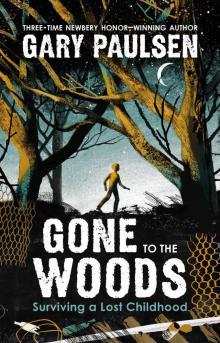 Gone to the Woods
Gone to the Woods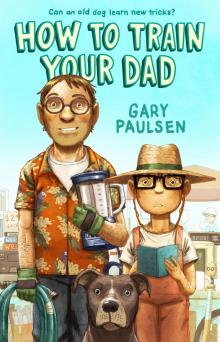 How to Train Your Dad
How to Train Your Dad The Haymeadow
The Haymeadow Amos Binder, Secret Agent
Amos Binder, Secret Agent The River br-2
The River br-2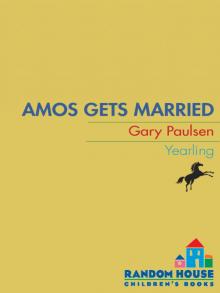 Amos Gets Married
Amos Gets Married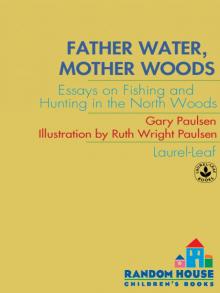 Father Water, Mother Woods
Father Water, Mother Woods Dunc and the Scam Artists
Dunc and the Scam Artists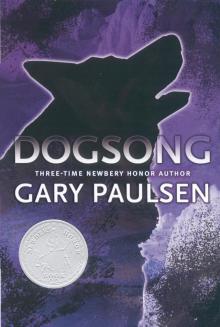 Dogsong
Dogsong Alida's Song
Alida's Song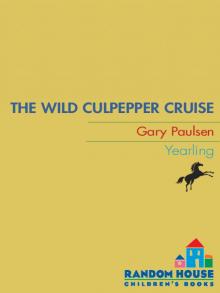 The Wild Culpepper Cruise
The Wild Culpepper Cruise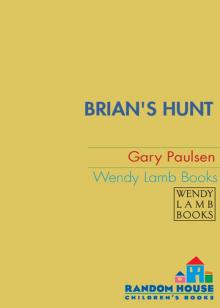 Brian's Hunt
Brian's Hunt Woods Runner
Woods Runner Dunc and Amos on Thin Ice
Dunc and Amos on Thin Ice The Treasure of El Patron
The Treasure of El Patron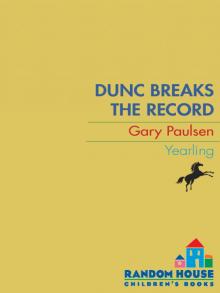 Dunc Breaks the Record
Dunc Breaks the Record Harris and Me
Harris and Me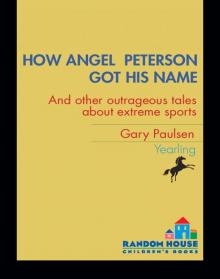 How Angel Peterson Got His Name
How Angel Peterson Got His Name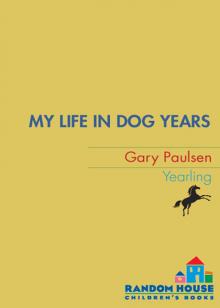 My Life in Dog Years
My Life in Dog Years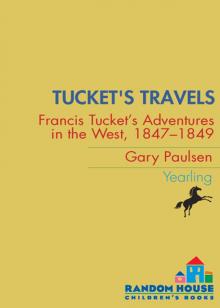 Tucket's Travels
Tucket's Travels Canyons
Canyons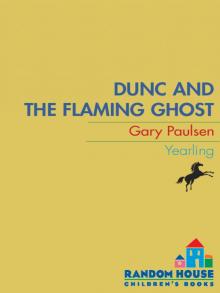 Dunc and the Flaming Ghost
Dunc and the Flaming Ghost The Schernoff Discoveries
The Schernoff Discoveries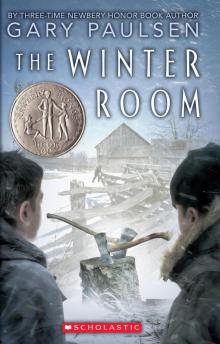 The Winter Room
The Winter Room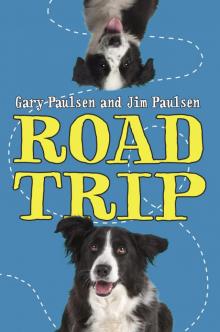 Road Trip
Road Trip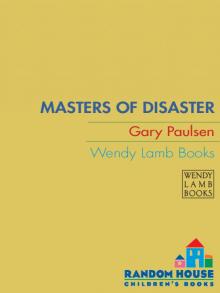 Masters of Disaster
Masters of Disaster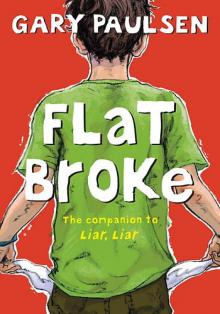 Flat Broke
Flat Broke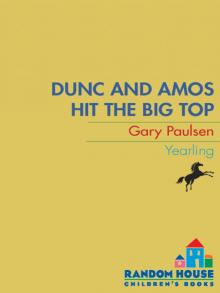 Dunc and Amos Hit the Big Top
Dunc and Amos Hit the Big Top Time Benders
Time Benders Caught by the Sea
Caught by the Sea Dancing Carl
Dancing Carl The Seventh Crystal
The Seventh Crystal The Boy Who Owned the School
The Boy Who Owned the School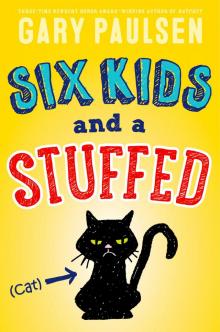 Six Kids and a Stuffed Cat
Six Kids and a Stuffed Cat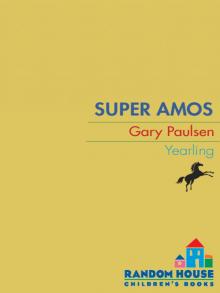 Super Amos
Super Amos Dunc and the Greased Sticks of Doom
Dunc and the Greased Sticks of Doom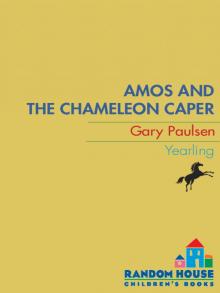 Amos and the Chameleon Caper
Amos and the Chameleon Caper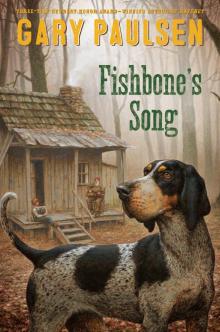 Fishbone's Song
Fishbone's Song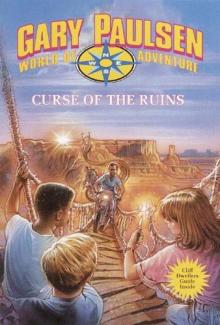 Curse of the Ruins
Curse of the Ruins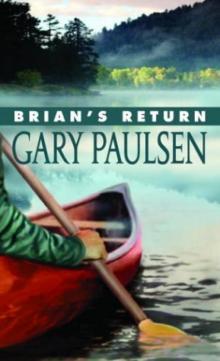 Brian's Return br-4
Brian's Return br-4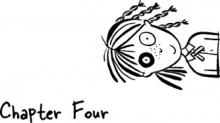 Molly McGinty Has a Really Good Day
Molly McGinty Has a Really Good Day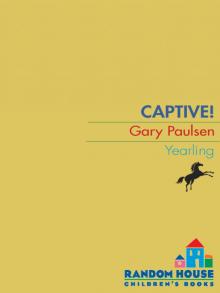 Captive!
Captive! Culpepper's Cannon
Culpepper's Cannon The Car
The Car Puppies, Dogs, and Blue Northers
Puppies, Dogs, and Blue Northers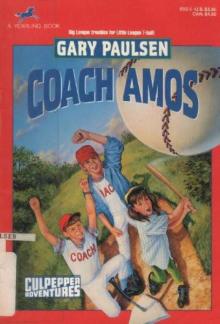 Coach Amos
Coach Amos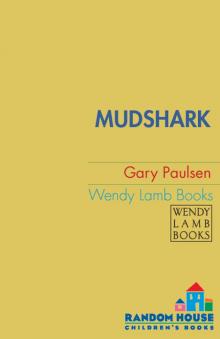 Mudshark
Mudshark The White Fox Chronicles
The White Fox Chronicles Dunc and Amos Meet the Slasher
Dunc and Amos Meet the Slasher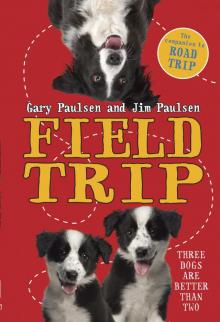 Field Trip
Field Trip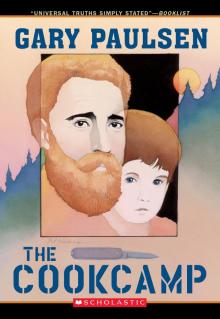 The Cookcamp
The Cookcamp Crush
Crush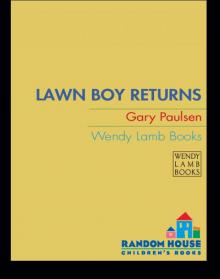 Lawn Boy Returns
Lawn Boy Returns Liar, Liar k-1
Liar, Liar k-1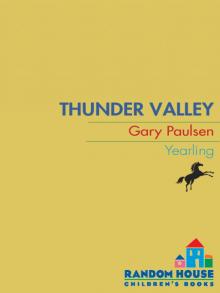 Thunder Valley
Thunder Valley The Tent
The Tent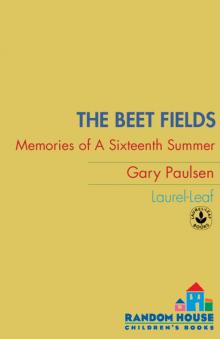 The Beet Fields
The Beet Fields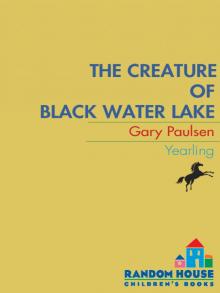 The Creature of Black Water Lake
The Creature of Black Water Lake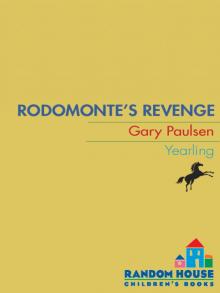 Rodomonte's Revenge
Rodomonte's Revenge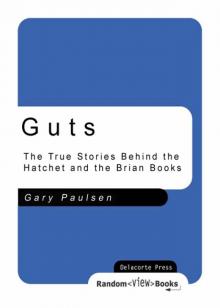 Guts
Guts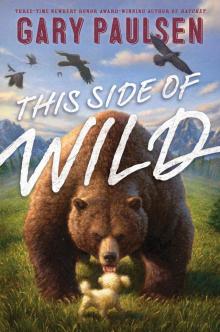 This Side of Wild
This Side of Wild The Rifle
The Rifle The Time Hackers
The Time Hackers Amos Goes Bananas
Amos Goes Bananas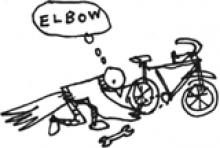 The Amazing Life of Birds
The Amazing Life of Birds Dunc's Undercover Christmas
Dunc's Undercover Christmas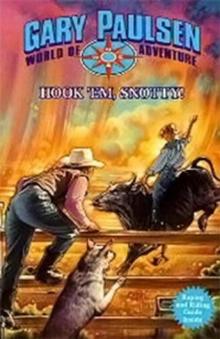 Hook 'Em Snotty
Hook 'Em Snotty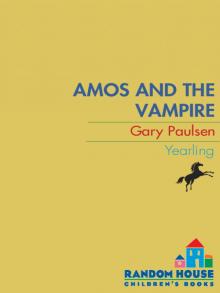 Amos and the Vampire
Amos and the Vampire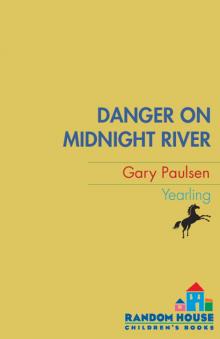 Danger on Midnight River
Danger on Midnight River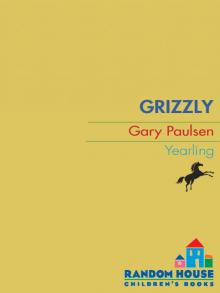 Grizzly
Grizzly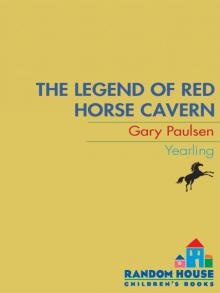 The Legend of Red Horse Cavern
The Legend of Red Horse Cavern The Transall Saga
The Transall Saga Lawn Boy
Lawn Boy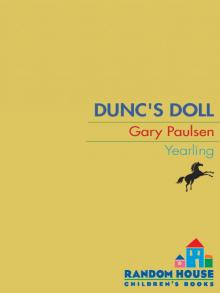 The Case of Dunc's Doll
The Case of Dunc's Doll A Christmas Sonata
A Christmas Sonata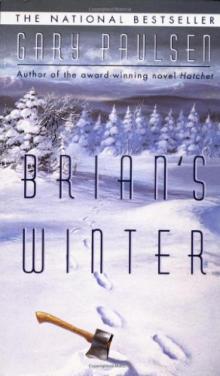 Brian's Winter br-3
Brian's Winter br-3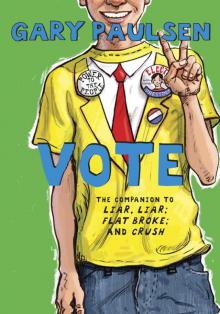 Vote
Vote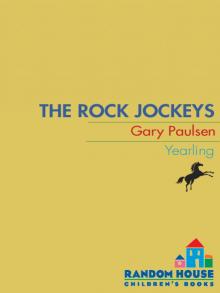 The Rock Jockeys
The Rock Jockeys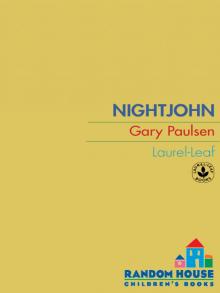 Nightjohn
Nightjohn Escape from Fire Mountain
Escape from Fire Mountain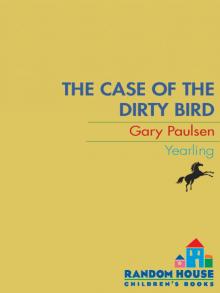 The Case of the Dirty Bird
The Case of the Dirty Bird Brian's Winter
Brian's Winter Amos's Killer Concert Caper
Amos's Killer Concert Caper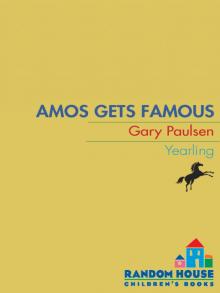 Amos Gets Famous
Amos Gets Famous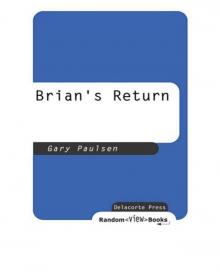 Brian's Return
Brian's Return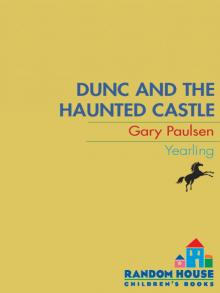 Dunc and the Haunted Castle
Dunc and the Haunted Castle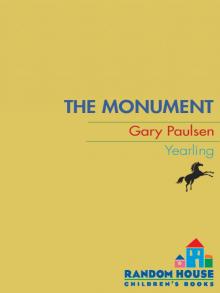 The Monument
The Monument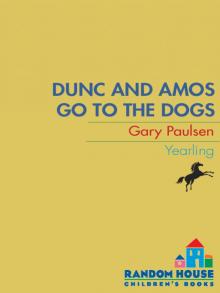 Dunc and Amos Go to the Dogs
Dunc and Amos Go to the Dogs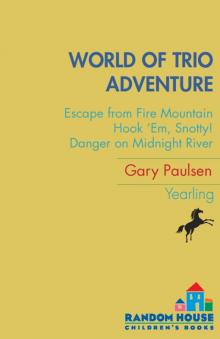 World of Adventure Trio
World of Adventure Trio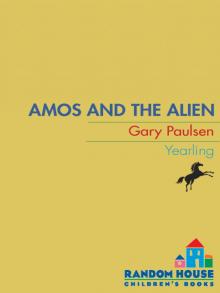 Amos and the Alien
Amos and the Alien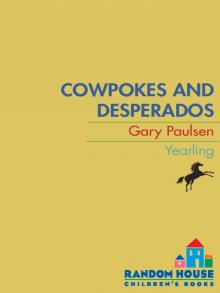 Cowpokes and Desperadoes
Cowpokes and Desperadoes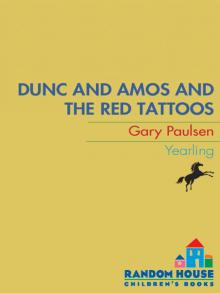 Dunc and Amos and the Red Tattoos
Dunc and Amos and the Red Tattoos Dunc's Dump
Dunc's Dump Skydive
Skydive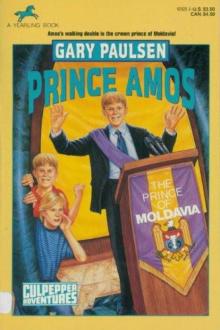 Prince Amos
Prince Amos The Gorgon Slayer
The Gorgon Slayer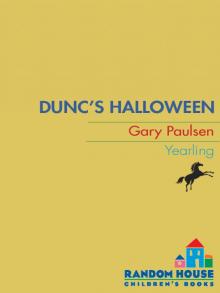 Dunc's Halloween
Dunc's Halloween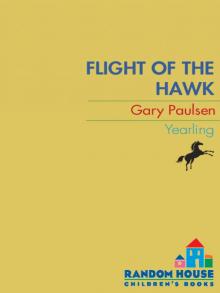 Flight of the Hawk
Flight of the Hawk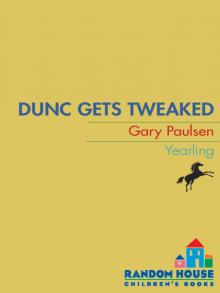 Dunc Gets Tweaked
Dunc Gets Tweaked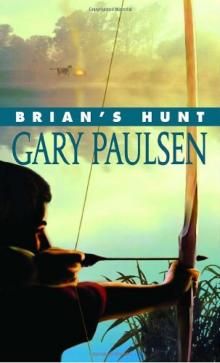 Brian's Hunt br-5
Brian's Hunt br-5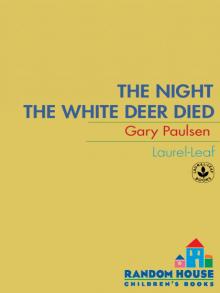 The Night the White Deer Died
The Night the White Deer Died